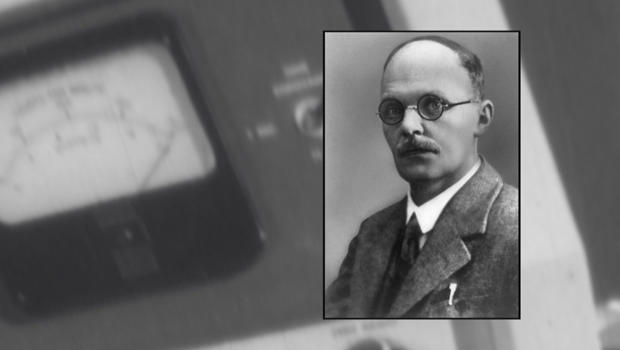Thanks to him, we can catch radioactive pollution: Who is Hans Geiger?
Interestingly, whoever he collaborated with won the Nobel Prize for their achievements in physics in the following years.

Hans Geiger was born on September 30, 1882, in Neustadt an der Weinstraße. He was one of five children born to a father who was a professor of philology at the University of Erlangen. He chose a career in science, but unlike his father, he was interested in positive sciences and studied mathematics and physics first in Erlangen and later in Munich.
After receiving his doctorate in 1906, he went to Manchester and assisted Arthur Schuster, who worked in electrochemistry, radiography, optics, and similar fields, and later Ernest Rutherford, who did research in the field of nuclear physics.
Johannes Wilhelm "Hans" Geiger (30 September 1882 – 24 September 1945) was a German physicist. He is best known as the co-inventor of the detector component of the Geiger counter and for the Geiger–Marsden experiment which discovered the atomic nucleus. He was the brother of meteorologist and climatologist Rudolf Geiger.
Geiger participated in various studies and was involved in the discovery of the atomic nucleus, the existence of which was confirmed by the Rutherford experiment. The experiment involved bombarding a gold plate with alpha particles. The absence of free flow and even the reflection of particles indicated a positively charged region in the center of the atom (over time this region became the nucleus).
Thanks to this discovery, Rutherford won the Nobel Prize in Physics. In 1912 Geiger returned to Berlin, where Walther Bothe was doing research on alpha particles. He continued to maintain contacts with British scientists such as James Chadwick, who was interested in beta particles (interestingly, these were the next physicists who collaborated with Geiger and won the Nobel Prize for achievements in physics in the following years).
His international research was interrupted by the outbreak of the First World War. Like many other scientists, Hans Geiger participated in the German mobilization. He served as an artillery officer and participated in the work of Fritz Haber, who was responsible for the use of chemical weapons in warfare such as the Battle of Ypres. It's worth stopping here and pondering the bitter twist of fate. As a patriot, Haber was heavily involved in rebuilding the country's industry after the war; He focused on separating gold from seawater, developed a method of synthesizing ammonia to improve the production of fertilizers (for which he won the Nobel Prize), and a team he led developed a very inexpensive and effective disinfectant. However, when Adolf Hitler came to power in 1933, he was forced to emigrate because he was a German of Jewish origin. He died in 1934, not knowing what the preparation developed by his team was used for (other than lice removal) by German soldiers in the following years. This substance was Zyklon B.
RADIATION SURVEY AND GEIGER COUNTER
Let us now return to Geiger, who was a professor in the 1920s and did extensive research on radiation. In 1924, he confirmed the Compton effect (Compton scattering), which helped win Arthur Compton the Nobel Prize in Physics; In 1928, together with his doctoral student, he developed the Geiger–Müller tube, the sensing element of the Geiger counter used to detect ionizing radiation. In the following years, he participated in cosmic ray research, first at the University of Tübingen and then in Berlin. In 1939 he became a member of the Uranverein ("Uranium Club"), a group of scientists exploring the possibilities of using nuclear energy for military purposes. It should be noted that Geiger opposes the continuation of the work. Nor did Walther Both support the Aryan physics doctrine, which was instrumental in the persecution of Fritz Haber and Heinrich Hertz's nephew, Gustav Hertz, and others. Geiger was appointed director of the Institute of Physics at the Technical University of Berlin, replacing Gustav Hertz.
Hans Geiger contributed greatly to research on the use of atomic, radiation, and nuclear energy. The role of this research has been proven by the Nobel Prizes awarded to the German physicist's colleagues and superiors. Although he did not live to see such striking awards, it is not possible to say that he was forgotten.
Today we can only be glad that Geiger's invention is no longer part of the basic equipment of public institutions, as it was only half a century ago. And it's not just a matter of ending the "Cold War". Thanks, among other things, to the achievements of German scientists, we are now more aware of the dangers of radiation. LCDs, TFTs, and OLEDs have replaced cathode ray tube displays not only in televisions but also in oscilloscopes. Even smoke detectors do not use radioactive materials in small quantities; instead, digital sensors using completely safe technologies are used. Perhaps this is the best reward Hans Geiger could have hoped for contributing to the health and safety of people around the world.
